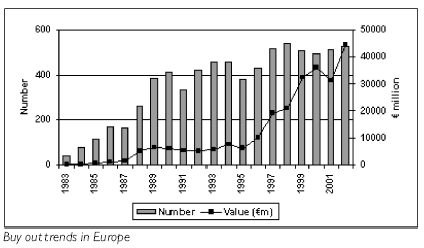International Corporate Rescue
Journal Issues
- Vol 1 (2004)
- Issue 1
- Issue 2
- Issue 3
- Issue 4
- Issue 5
- Issue 6
- Vol 2 (2005)
- Vol 3 (2006)
- Vol 4 (2007)
- Vol 5 (2008)
- Vol 6 (2009)
- Vol 7 (2010)
- Vol 8 (2011)
- Vol 9 (2012)
- Vol 10 (2013)
- Vol 11 (2014)
- Vol 12 (2015)
- Vol 13 (2016)
- Vol 14 (2017)
- Vol 15 (2018)
- Vol 16 (2019)
- Vol 17 (2020)
- Vol 18 (2021)
- Vol 19 (2022)
- Vol 20 (2023)
- Vol 21 (2024)
- Vol 22 (2025)
Vol 1 (2004) - Issue 5
Article preview
'Constructive Interference' - A Much-Needed New Approach from Private Equity in the Restructuring Market?
Alan Hudson, Partner, Ernst & Young LLP, London, UKA scan of the financial press on almost any day would throw out one or more transactions involving private equity houses and would begin to give a sense of what a key role the industry is playing in financing business and corporate activity both here in the UK and overseas. Such that the recent announcements that the AA, the roadside assistance to financial services group, is to be sold by Centrica, to CVC Capital Partners and Permira for GBP 1.75 billion, or that Terra Firma the buyout group has beaten off competition from rivals to acquire two of the UK’s leading cinema chains Odeon and UCI for close to GBP 600 million, rather than being the exception, are just two more in an increasingly long line of private equity funded LBO deals. With the traditional exit routes of IPO and trade sale having been relatively closed over the last few years, private equity has provided both the fuel and drive for a significant proportion of the corporate transactions in many markets across the globe. As a result, there is now a proliferation of private equity funds, ranging from small regional players to those who operate globally with USD billions to invest. In the UK alone, the BVCA has over 160 members.
To understand the likelihood of private equity therefore becoming an increasingly key stakeholder in the restructuring arena, one has only to look at the scale of the investment that has gone on in recent years.
In the European market, off the back of the technology bubble, fundraising by private equity houses peaked in 2000 at EUR 48 billion. EUR 35 billion was invested that year alone and, overall, European private equity houses have invested a staggering EUR 127 billion since 1999 (Source: EVCA 2003 Yearbook). Given the historic norm on investment lifecycles of 3 to 5 years (of this more later) and the vintage of these funds, much of this cash pile has now been invested. However, despite some of the market difficulties both domestically and internationally over the same period, the thirst of investors into private equity funds has seemingly not been quenched. Many private equity houses are out building new war chests and an increasing proportion of funds being invested by institutional investors are being allocated to this category. For example, Permira, which has recently been attempting to acquire the retailer W H Smiths for GBP 940 million, has raised the largest ever fund for a European private equity house of EUR 5.1 billion (Source: Financial News). In fact, of the funds raised in 2003, two-thirds were into Permira or Texas Pacific Group mega funds, and only recently EQT, the Nordic-based private equity firm, closed its latest fund at EUR 2.5 billion just six months after launch and in excess of an original target of EUR 2 billion.
As the funds have got larger so have the deals. LBO deal sizes have gone up by a factor of 15 since the 1990s.

Get instant access to this article for only EUR 55 / USD 60 / GBP 45
Get instant access to this issue for only EUR 175 / USD 230 / GBP 155
Subscribe to the journal and recieve a hardcopy for
EUR 730 / USD 890 / GBP 560
log In here
Copyright 2006 Chase Cambria Company (Publishing) Limited. All rights reserved.
